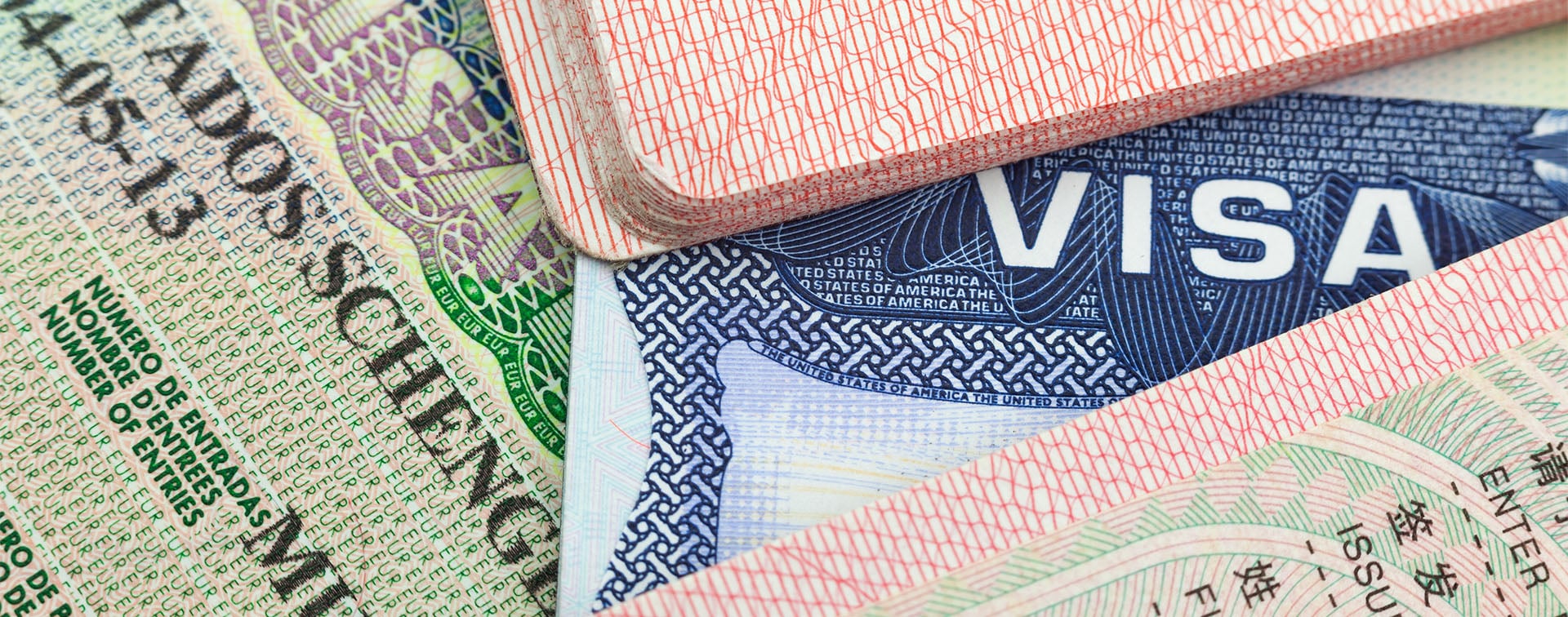
Prof. Dr. Yossi Harpaz is Associate Professor of Sociology at Tel Aviv University.
In a global era where business and leisure often cross national borders, understanding visa policies is critical. Where visas are required, travel may become expensive and uncertain, and require planning ahead. At the extreme, stringent visa policies can impede mobility altogether. Conversely, visa-free travel opens up possibilities for effortless, spur-of-the-moment movement, potentially boosting opportunities for tourism and business.
We are largely familiar with the causes that make some passports stronger than others in terms of visa-free travel.1 The most common use of visa requirements is immigration control. Accordingly, the passports of economically developed, stable, and democratic countries provide extensive travel freedom. Most countries do not require visas from, say, Germans or Canadians because they are not seen as potential illegal immigrants. In contrast, the citizens of unstable, poorly developed, and autocratic countries have low travel freedom: countries typically vet them before admission out of concern about unwanted immigration. In this essay, I analyze the relationship between a country’s openness to foreign nationals — in other words, its visa policy — and its own citizens’ travel freedom, gauged using the Henley Openness Index.

Extensive travel freedom and high openness do not usually go hand in hand. The world's most open nations include countries such as Burundi, Rwanda, Samoa, and Seychelles — all developing countries that aren't particularly appealing to prospective immigrants. Some are islands, further reducing the possibility of unwanted immigration. On the other hand, countries that score highly on the Henley Passport Index (countries with ‘strong’ passports in terms of visa-free access to numerous destinations) don’t generally exhibit high openness scores. These countries are often sought-after immigration destinations, leading them to adopt relatively closed visa policies. A more systematic analysis of countries’ openness and passport strength scores reveals that globally, there is a slight positive correlation (0.1) between openness and travel freedom. However, when we divide the countries into categories based on travel freedom, a more nuanced picture emerges.
Let us first examine visa openness in countries whose citizens enjoy extensive travel freedom. The countries in the global top third of travel freedom — those with passports providing visa-free access to more than 150 destinations — are typically developed and stable democracies. This category includes all the EU member states and other developed countries such as the US or Canada.
The category also includes island nations such as Singapore and Malaysia, which have relatively high openness scores. Apart from these island nations, all other highly ranked countries on the Henley Passport Index are below the 55th percentile in terms of visa openness. In other words, high openness scores are very rare among these countries.
Overall, the average openness score for high-passport-ranking countries, with 97 nationalities admitted visa-free, is very close to the global average (99 visa-free nationalities). More importantly, the correlation between openness and travel freedom is large and negative (-0.39). This means that within the high-passport-ranking category, countries with greater travel freedom were more closed to foreign visitors and more likely to require visas from them. Many countries in this category are members of the EU: they enjoy high travel freedom and their visa openness is slightly below the global average (most EU countries admit 92 to 93 nationalities visa-free). Australia, the US, Canada, New Zealand, and Japan are the most closed in the high-passport-ranking category: they admit between 44 and 69 nationalities visa-free, placing them between the 22nd and 34th percentiles of openness globally. High attractiveness for immigration goes hand in hand with low openness.
Let us now examine countries with a lower ranking on the Henley Passport Index, meaning those in the bottom two thirds of travel freedom. These countries’ passports provide visa-free access to 150 or fewer destinations. This category mostly includes developing countries in Africa and Asia, as well as some Eastern European and Latin American nations. Their average openness score is the same as the high-passport-ranking category and close to the global average. However, in this case, the relationship between the Henley Passport Index and Henley Openness Index is reversed: among weaker-passport countries, there was a positive correlation of 0.22 between passport strength and openness. This means that overall, low-passport-ranking countries with stronger passports tend to be more open than the countries with the weakest passports. Panama, for example, has visa-free access to 144 destinations and an openness score of 120. Whereas holders of a Nigerian passport have access to 46 destinations with 49 foreign nationalities being able to enter the African country without a visa, and Yemeni passport holders have visa-free access to only 35 destinations and the Middle Eastern nation is open to only 12 other nations worldwide.
The most striking pattern, however, is the greater dispersion of weaker-passport countries in terms of openness. Whereas the high-passport-ranking category includes a relatively narrow range in terms of openness — when excluding islands, high-passport-ranking countries admit between 44 and 109 nationalities — the openness scores of low-passport-ranking countries is very widely dispersed. This category includes the world’s most open countries, such as Samoa and Mozambique, which both admit 198 nationalities visa-free, as well as the world’s most closed countries, including Afghanistan, North Korea, and Turkmenistan, which do not offer visa-free access to any nationality.
This pattern of greater variability among low-passport-ranking countries is also found when examining specific world regions. In the Middle East, higher-passport-ranking countries like Israel and the UAE have visa openness levels that are close to the global average (100 and 80, respectively). Middle Eastern countries with low travel freedom exhibit extreme levels of openness or closure — for example, Iran is very open (185), and Syria is very closed (25). In Europe, the openness scores of EU nations are close to the global average, whereas non-EU countries like Azerbaijan and Kosovo exhibit much higher or much lower openness scores (26 and 109, respectively). Almost all African countries have low travel freedom, while openness diverges wildly. Thus, 11 of the 20 most open countries are in Africa, as well as 12 of the 20 most closed countries.
These findings demonstrate the different approaches of countries with high and low passport rankings, reflecting a difference between highly developed and less developed countries. The countries with the highest Henley Passport Index scores are also highly attractive immigrant destinations. Therefore, they employ relatively restrictive visa policies to prevent unwanted immigration. At the same time, high-passport-ranking countries must strike a calculated balance between closure (to keep out potential immigrants and security risks) and openness (to facilitate trade and tourism). This explains their tendency to cluster around the global average in terms of openness. Low-passport-ranking countries overall are less attractive to immigrants, reducing a key motive for visa closure. Among low-passport-ranking countries, more developed countries are more open to foreign nationals, reflecting their integration in global networks of trade and tourism.
Broadly speaking, low-passport-ranking countries do not have to be so careful about striking a balance between openness and closure. Some of them — like Rwanda or Samoa — adopt policies of radical border openness without concerns about being overwhelmed with immigrants. This is especially true of island nations that have no land borders. Meanwhile, less-developed countries are usually not so closely integrated in global trade networks. Moreover, this category includes pariah regimes such as Afghanistan and North Korea that do not seek to attract foreign tourists or entrepreneurs. This explains why this category includes both the most open and the most closed visa regimes.
Up to this point, the discussion focused on steady structural factors affecting openness and travel freedom. It is also important, however, to examine how global mobility has changed in recent years. First, we find a moderate but consistent global trend towards more openness. Out of 227 destinations analyzed by Henley & Partners, 120 (52%) have increased their openness between 2018 and 2023, and only 62 (or 27%) have becomes less open. The remaining 20% did not change their level of openness. However, most changes were not very dramatic: about half the countries that changed their openness score did so by fewer than two points. The notable exception to this rule is the countries in the Gulf Cooperation Council, which significantly increased their openness and now admit many more nationalities visa-free.
Second, there was also a general trend of increased travel freedom, mirroring countries’ growing openness. Comparing 2013 and 2023, the average country gained 18 visa-free destinations. The country that gained the most in terms of travel freedom was the UAE, which gained an extra 107 visa-free destinations from 2013 to 2023. Other countries that have made significant gains in travel freedom include Moldova (62 new visa-free destinations), Ukraine (69 new destinations), and Colombia (70 new destinations). A key driver of change for these four countries was gaining visa-free access to Europe’s Schengen Area.
China also gained in terms of mobility (36 new destinations) but its passport still does not provide visa-free access to the EU. In contrast, some countries have made only modest gains, leading to declines in their relative score. The travel freedom provided by the US passport grew slowly (12 new visa-free destinations) while the Indian passport gained only five new destinations. Eight countries actually lost visa-free travel options compared to 2013. This list is led by war-torn Yemen and Syria, which lost eight and nine destinations, respectively.
In conclusion, the relationship between travel freedom and openness is not straightforward but manifests in a complex, non-linear manner. Nations' diplomatic, socioeconomic realities, and strategic goals significantly impact these factors, resulting in a complex web of interrelations. As the global landscape continues to change, so will these patterns, reflecting the dynamic nature of global mobility. Further research, especially in-depth case studies, would provide more insights into the unique scenarios shaping these trends.
1 Selected further reading: Mathias Czaika et al., “The Global Evolution of Travel Visa Regimes,” Population and Development Review 44, no. 3 (2018): 589–622. Yossi Harpaz, Citizenship 2.0: Dual Nationality as a Global Asset (Princeton, NJ: Princeton University Press, 2019). Dimitry Kochenov, Citizenship (Cambridge, MA: MIT Press, 2019). S Mau, F. Gülzau, L. Laube, and N. Zaun, “The Global Mobility Divide: How Visa Policies Have Evolved over Time,” Journal of Ethnic and Migration Studies 41, no. 8 (2015): 1192–1213. E. Neumayer, “Unequal Access to Foreign Spaces: How States Use Visa Restrictions to Regulate Mobility in a Globalized World,” Transactions of the Institute of British Geographers 31, no. 1 (2006): 72–84. Ettore Recchi et al., “The Global Visa Cost Divide: How and Why the Price for Travel Permits Varies Worldwide,” Political Geography 86 (April 2021).